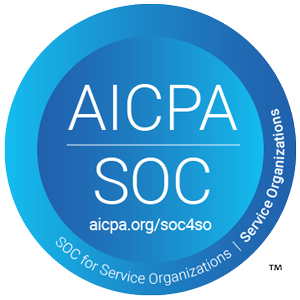Idea Crowdsourcing – If You’re Not Doing it Right, You Shouldn’t Do It At All
You don’t hear the word “innovation” much lately without the word “collaborative” in front of it. That’s because as companies dive into innovation as a culture, they’re realizing that it’s not something that can be successful without collaborative participation.
Crowdsourcing of ideas is one important part of collaborative innovation, as it brings diverse groups together and has the potential to shake up the status quo. It’s hard to be innovative with the same small crew working in the same small box they’ve always inhabited. Fresh ideas can come from the least likely of places, so being open to hearing from all corners of the organization is a must.
But you shouldn’t force crowdsourcing to happen before you’re ready (read: before you’ve prepared for it), because if you do it wrong, you can turn potentially valuable participants against your future efforts.
No one has time for a learning curve, especially someone else’s.
So here’s how to do it right – and why you must:
Align your efforts with the company
Like everything else in your Innovation Program, crowdsourcing must be deliberately implemented – with an end goal in mind. When considering your collaborative innovation goals, have the company’s overarching objectives and mission statement in mind to guide your efforts.
Then meet with business unit leaders to ask what their top challenges are. Once you’ve agreed on a challenge topic ensure you have a challenge sponsor with the commitment and budget to take the top ideas through to implementation. You’ll want to frame these challenges so they are in line with both the top business concerns the C-suite is currently focused on and company’s mission statement. And be realistic around expectations: you may not be able to crowdsource an idea that turns around Q3 numbers, but you can crowdsource a fix or advancement to a product line that’s lagging.
(If you’re wondering how to ‘sell’ this idea internally, we recently hosted a Google hangout focusing on just that – find it here: Selling Innovation Management Inside Your Enterprise.)
Find your people
Not every innovation challenge will require the same level of participation to solve. But once you have a project that will benefit from crowdsourcing, you need to assemble the actual crowd. Some considerations:
Will you source internally or externally – or both? Some company solutions may require only internal participants (or require confidentiality), but when the innovation challenge involves a consumer product, consider adding external voices. Your clients’ wish lists may contain the beginnings of your next big breakthrough.
Who do you include? Many companies either define the audience too broadly (including everybody) or too narrowly (focusing on a single department).
Internally, avoid siloed thinking by asking across all business units, when appropriate. Depending on the challenge you may limit participants to manager level and above, or open it to include anyone who’s expressed an interest in your innovation program.
When sourcing externally you can choose to involve key clients, loyalty members, stockholders, etc. – or extend it to the general public, if it makes sense to do so.
Chances are you’ll also need to identify and entice subject matter experts help evaluate your crowdsourced ideas. While the general crowd is great for initial idea gathering, voting and commenting, the SMEs actually have the knowledge and insight to assess, shortlist and ultimately help select the best ideas.
The point – in both cases – is that you need to properly identify the right audience characteristics and size for the right task. And consider a mobile-enabled tool (think Brightidea!) so you can access an even broader pool of innovators.
Now that you know WHO to include, you need to consider HOW to attract them. Some tips:
Enough can’t be said about executive sponsorship. If your CEO is sharing his excitement around solving your challenge in a company-wide email, people will pay attention and look to participate. Also consider motivational tools such as contests and leaderboards.
When sourcing externally, reaching out to client groups with a vested interest in improving your product line, or creating a Beta group with early access to advancements is a win-win.
Putting the crowd to work
One effective method of crowdsourcing is hosting a Hackathon – a brainstorming session to generate innovative solutions to company challenges.
But crowdsourcing doesn’t have to be limited to one-time events when you have an innovation platform, of course, as it encourages harnessing collective creativity pretty much nonstop. You can set start and stop times for challenges that “live” online.
Communicating results to ‘the crowd’ is important as well. Participants shouldn’t have to ask about the status of their contributions – you should proactively reach out with updates, both on an individual and on a group level. Sharing successes widely not only shows them that their participation is appreciated; it also encourages others to participate the next time around.
Keeping the crowd in line
You want outside opinions, but you don’t want to box yourself into a corner where majority rules over common sense or what’s best for the company – and that’s exactly what can happen when you aren’t prepared and do NOT have an innovation system in place.
Business Insider’s Nick Saint says it well, “Crowdsourcing is great for generating ideas… but when it’s your money on the line, true democracy is a bad idea.”
Innovation programs eliminate these concerns, offering clear guidance around process and expectations.
Reporting Outcomes
Your CEO won’t want to just hear about what your program has done for others though – so you’ll need to be ready to report successful outcomes to management. Success metrics should be tracked as they depend on the sophistication of your innovation program, but some possibilities can include numbers around:
- challenges attempted/solved
- ideas generated
- participants (unique and return)
- business units engaged
- ideas implemented
- Revenue and/or cost savings from ideas implemented
Crowdsourcing rewards
The rewards the enterprise gains from crowdsourcing can’t be ignored. Beyond coming up with great new ideas, they develop a culture where teamwork becomes a more visible part of the organization. And there’s this:
“The beautiful thing about crowdsourcing is that it’s usually low risk. It costs next to nothing to figure out if your ideas are worth pursuing or need changing. Figuring this out early in the game could save you thousands of dollars later on.” [Source: Crowdsourcing Business Ideas: How to Do It, Nicole Fallon, Business News Daily Assistant Editor, Nov. 2013]
We’ve actually seen it save millions.
Are you crowdsourcing effectively? We’re happy to show you how! Reach out and contact us.


